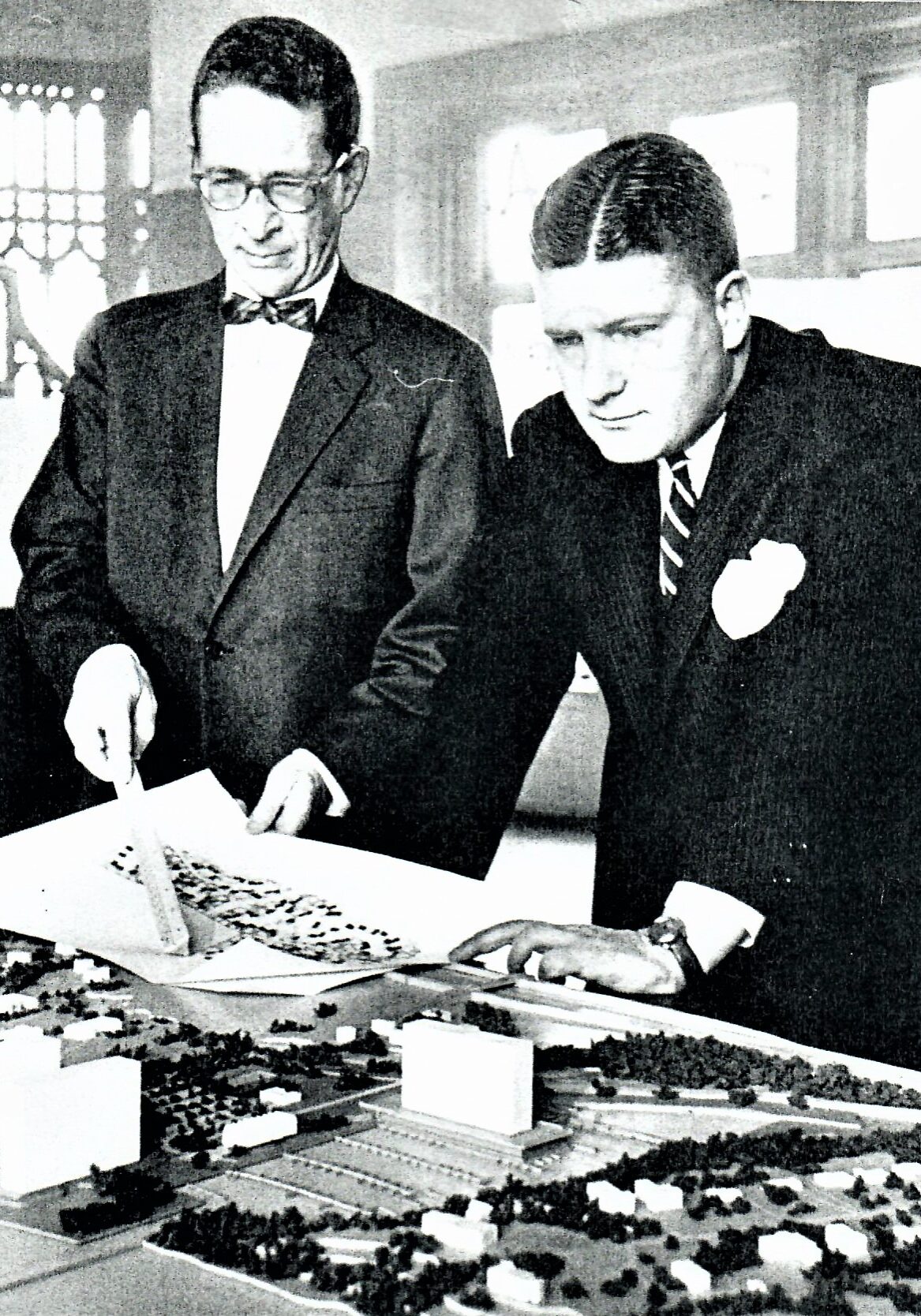Places
Developments
Bratenahl Development

During the late 1950s and early 1960s, Bratenahl Village faced financial declines that threatened its existence. Much of its tax base was dropping as the wealthy families began to die, the young were moving to suburbs, and the larger homes became costlier to maintain.
To address these problems, the mayor and council engaged the Urban Land Institute (ULI) in 1956 to begin a study for a long-range development plan.
The 1958 ULI report advised the village to support the creation of a local development corporation as the best means to ensure the assembly of sufficient land necessary for significant projects and to control the nature and location of redevelopment.
John Dempsey II, a native son, did not want to rely on strangers. He launched The Bratenahl Development Corporation (BDC) on November 25, 1958, serving as BDC president and James Ireland Jr. as chairman.
The next step was to secure the necessary working capital. Dempsey and Ireland needed to secure the support of Gertrude Britton, who was extremely wealthy, a creative thinker, and also a doer. In addition to Mrs. Britton, the two persuaded villagers Daniel Ford, David Ingalls Sr., Mildred Putnam, Herman Vail, Ernest Dempsey, and Jeanette Dempsey to invest $5,000 apiece in BDC. These stalwart villagers who stepped forward originally intended to exclusively build and market single-family homes on both the north and south sides of Lake Shore Boulevard. Population data convinced them that Greater Cleveland had a surplus of families who could afford luxury homes.
Jeannette Dempsey, Planning Commission chair, insisted that the council hire a planner capable of doing something inspirational. As a result, Carl Feiss, a highly qualified urban planner and a master at coordinating an intricate array of tasks, was hired by the council in 1959 to implement the ULI recommendations and prepare a detailed redevelopment plan for the village. Also, the council asked him to act as an informal adviser to the BDC.
A master plan, "The Future of Bratenahl," was released by Carl Feiss in March 1960. The project urged BDC to attempt something far-reaching into what Bratenahl used to be, combining high-quality dwellings with a hotel, motel, restaurant, and club life recreation and boating. Consequently, BDC set aside its original intention of exclusively building single-family homes.
In 1960, Councilman James Scholl suggested that the council president, James Davis, resign from the council because of the conflict of serving as legal counsel for the Bratenahl Development Corporation. Richard Hakanson, 10322 Lake Shore Boulevard, contended, "Scholl has engendered a great deal of ill-feeling without any notable display of intelligence, acumen, or apparent information."
In regards to Council President Davis, the Women's Republican Club president stated, "Where a professional politician learns through the necessity of survival to communicate, the non-professional tries to get the job done in the least expensive and most efficient way possible. Occasionally this leads to small non-informed factions growing up believing that something sinister is going on in their village government.”
Heeding the Feiss recommendation, Dempsey headed a $30 million push for the apartment and condominium complex on the old Lake Shore Country Club site on the Northwest corner of Eddy Road and Lake Shore Boulevard. Spurned by local banks, Dempsey secured financing for the project from Chase Manhattan Bank in New York.
Dempsey appeared before the Bratenahl Planning Commission in April 1964 to present BDC's final plans for the 100 acres under its control. Three apartment-style buildings were proposed on the 19-acre site of the former Lake Shore Country Club. Eighty-one single-family homes would be clustered at the southeast corner of Eddy Road and Lake Shore Boulevard.
